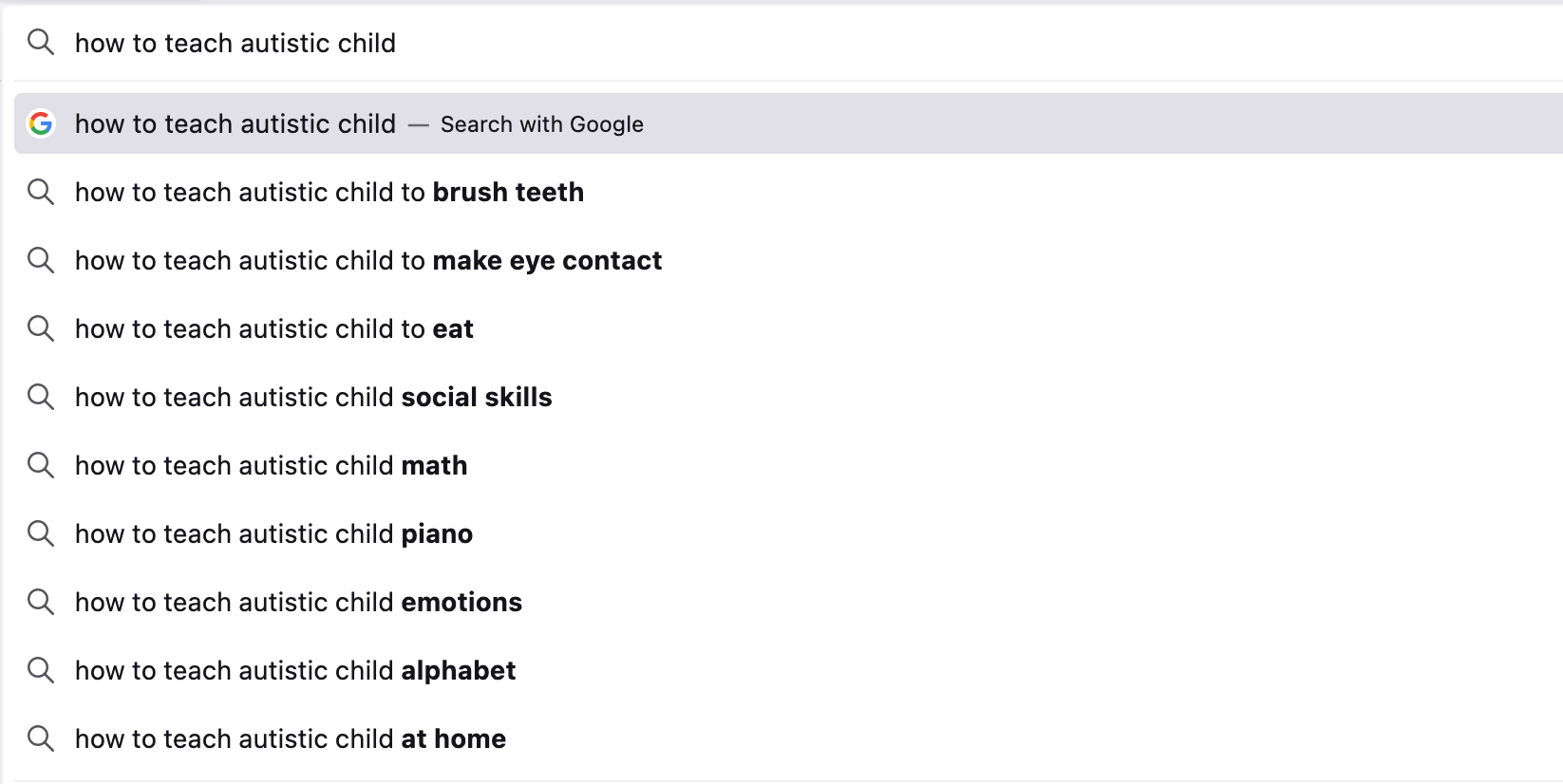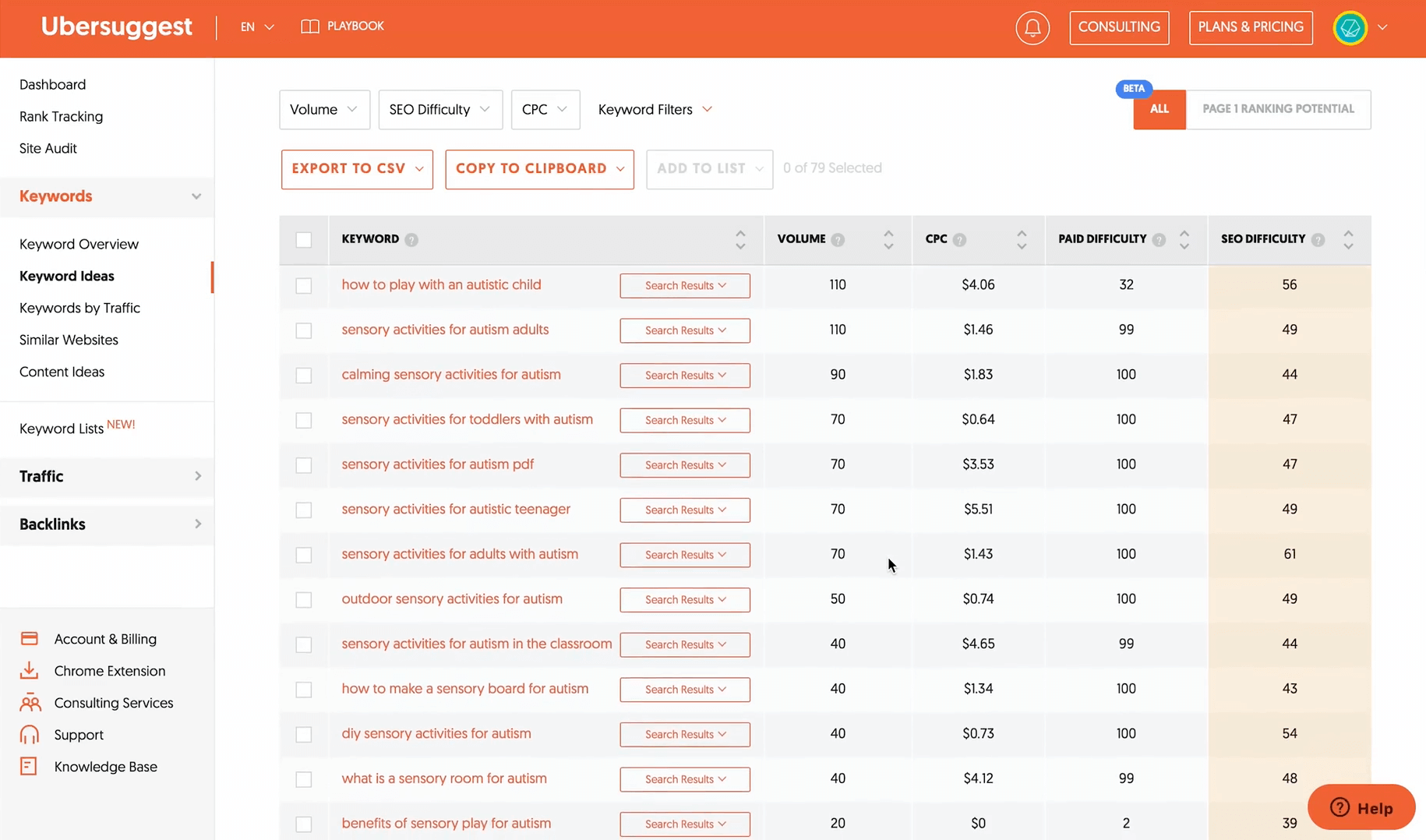Taught by Tina May
Now that we understand the basics of keyword research, I’m going to walk you step-by-step through my process for brainstorming content ideas that will rank highly in searches and drive traffic to your website.
It’s one thing to understand the concepts at a high level, but it’s another thing to apply those concepts to a real business. So here I’m going to walk you through a practical example, then have a chance to apply it for yourself.
The common problems in finding keywords often rest on what to do if most of the keywords you can think of are either already really competitive; or if your target audience isn’t actually searching for your product or service.
We experienced this first hand when we first started running bootcamps in Bali. We had created something that nobody else was doing at the time - running immersive coding retreats where you would fly to Bali, step away from the distractions of everyday life and spend 10 days learning how to build your own web development business. It was an exciting concept, but it wasn’t one our customers were actively searching for. Nobody was searching for a coding retreat in Bali because they had never even heard of that before. On top of that, most of our audience didn’t decide to learn to code and then look for us, rather they found us and then decided that they wanted to learn to code. If we were focused on targeting keywords like “coding retreat bali” or “coding bootcamp bali” we would have missed 95% of our actual customers.
A similar challenge applies to the business I’m going to use as a case study for this lesson. They sell specialty crayons for kids with autism and special needs, and it’s a brilliant product that makes a real impact on their target customers. It’s a well-known fact that many kids with autism or other developmental disabilities find writing and drawing challenging, so using these crayons which contain a special easy-glide wax makes it easier and more fun for them.
So they have a product that has a clear need, their customers love them once they have tried them, but nobody is searching for it. Most of their target audience doesn’t even realize that this product exists so they wouldn’t be searching for it directly. But when I look at this product, I see so much SEO potential, if done right. It’s just about being a little more creative in the content you’re creating.
To start with, the first thing I would do is look at the customers they are trying to reach:
Each of these targets is slightly different in terms of what they are looking for, how they think, and what search terms they are typing into Google.
Since parents are the biggest target audience, let’s think about what they might be looking for:
The most direct terms
While only a small proportion of the target audience might be searching for them, it’s such relevant content because they are actively looking to purchase. Sending even 10 people per month to a page is great if half of them end up purchasing something. Here are some of the most direct keywords I can think of:
Broader search terms
Since the majority of our target customers either don’t know the product exists or don’t understand how it would be helpful, we need to go a bit broader in our search terms.
First, ask yourself, what problem is it solving for them?
The problem is they want their kids to be able to write or draw, and at the moment it’s really challenging. They probably want it to be less stressful, more engaging, and able to improve their kid’s development and hand-eye coordination. When you think about it that way, here are some of the search terms that might get your website in front of them:
Then, you need to look out for search terms that recognize their fears, struggles, and goals:
You also want to understand the language that’s used by that target audience. If they’re commonly using a particular phrase, it’s worth researching whether using that term would make your keyword more effective. In our case, we could include these terms in our search:
Finally, take a step back and think about their overall goal beyond drawing or writing. For example, to build hand-eye coordination, to help them fit in at school, to build confidence, etc.
After brainstorming on that topic, now you need to create a few key pieces of content that cover each of those search terms. The blog post doesn’t have to directly have the same title as the search term itself, but you should at least include it in sub-headings and the body of the content itself. For example, some blog posts might be:
Eventually, you’re going to saturate the topic you’ve researched. Even as an expert there are only so many ways you can approach that topic before you dry them out. So when you hit that point, it’s time to go a bit wider and look for things where you could add value to what your target audience might be searching for.
A simple way of doing this is to start typing in the initial search terms into Google and see what some of the auto-complete suggestions are. If we type in “how to teach autistic child…” here’s what we’ll get:

That said, you don’t want any random content, but only those that feel relevant and on-brand to your niche. In this case, since we’re attracting parents of autistic children who care about their kid’s development and life quality, we could interview a physical therapist or do a poll of parents and share their responses.
Beyond brainstorming & Google auto-complete, the next thing I would do is to look through forums or to talk to my target customers to really understand the topics and questions that were relevant to them. Then, I’m going to build content around that.
Once we have a really solid base of 30 - 50 ideas, we’ll jump onto Ubersuggest and type in variations of the keywords we’ve found so far.

A few things that jumped out at me were that searches often included the age - “…for toddlers,” “…for kids,” “…for adults.” The phrase “sensory activities” was used quite a bit, so I would note that down, both as to its own concept, and also to incorporate into other blog posts where relevant.
To figure out which competitors to look at, enter a few of the keywords into Google and see which websites repeatedly come up. If you think that your target audience would find them interesting or helpful, pop those into Ubersuggest.
The first competitor, autismspeaks.org has a lot of performing content that’s rather clinical and seems focused on parents at the early stages of diagnosis. So not all of them will be relevant for us. Just because a competitor has an article that performs well doesn’t mean the same content would perform likewise for you. You have to think from the perspective of your target customer about what they want from you specifically.
If we want to create similar content, we would need to make sure that it still fits the overall feeling and tone of the brand - more conversational, friendly, or reassuring.
Some of the content that I see as a closer fit for this project are the topics like:
There are also some great ideas for content that follow the same pattern but are seasonal or jumping on trends. Let’s say you create a blog post on “coloring activities for kids with autism” and that performs well. You could then create themed versions of that, like “Christmas coloring activities for autism” and “easy thanksgiving crafts for autistic kids” which tend to be quite seasonal but will drive a little spike of traffic every year with less competition. Seasonal content also tends to perform well on social media, so even if the SEO traffic is smaller, it still benefits from social sharing.
Once you feel like you’ve saturated that key audience, you can brainstorm a few ideas for the other audiences like family & friends or teachers.
If you’re thinking about grandparents or other family members, their questions might be a little different. They might be searching for things like:
Whereas teachers might be searching things like:
Once you have this big brainstormed list of ideas, you probably have 50 - 100 different blog post ideas that you could write, the next step is to prioritize them. I generally use 3 criteria to determine what to create first:
There is no perfect answer to those questions, and I would say it’s so much more important with SEO to just get started than to try to have a perfect plan. But this can form a benchmark for you. Let’s say you have an idea for an article where you’re going to interview 30 ABA therapists for their top tips. That is a really cool piece of content and one that might get a ton of traffic, but it also might take you 3-4 weeks to create. On the other hand, there might be topics you just know so well - it’s within your area of expertise and you’ve got resources on it - and you know you get 10 articles done in a single week.
Sometimes just going with what’s the easiest is the better way to get started than trying to go straight after big pieces of content. The same goes with how much traffic you’ll likely get from it. If you have lots of different ideas and some of them seem certain with less competitive keywords with huge search potential, it probably makes sense to start with that first, and tackle some of the more niche content later.
Each blog post that’s relevant and high quality will start building your domain authority and driving traffic. Even if it’s only a trickle of traffic from each piece of content, if you can commit to regularly creating content it’s going to make a huge impact for you overall.